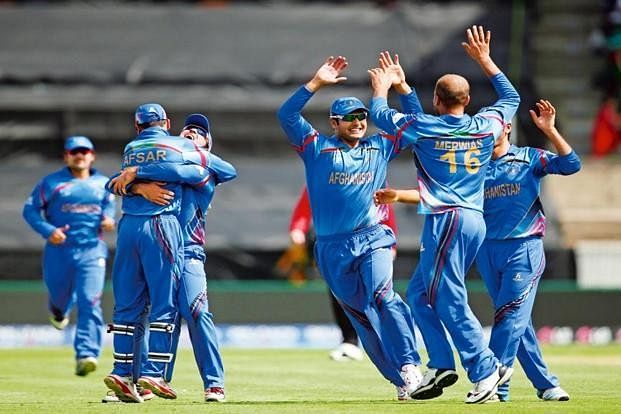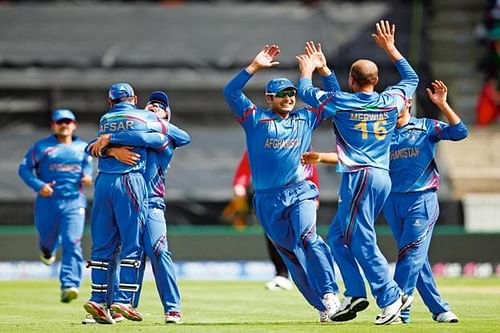
The 'minnow' storm - Cricket beyond 10 teams
Every once in 4 years, a team from the United Kingdom graces World Cricket with its presence and never ever ceases to surprise the cricketing nations at the grandest stage. With Ireland trying to make giant leaps and an entry into the cricketing foyer, it is a huge surprise that since beating Pakistan in 2007, their wagon has probably not moved more than a few inches. This, time and again, fuels an age old question - Does cricket require only 10 test playing nations?
Admit it; it was repetitive to watch England and Australia play 10 tests and ODI’s within 8 months. Or India and Sri Lanka play so many ODI’s a year, or the Pak-SA series in Abu Dhabi immediately followed by a reverse in SA. The solution to this problem is simple: more teams should be brought to the fore, for variety is the spice of life.
Who doesn’t enjoy a giant killing performance? Like Afghanistan beating Australia in the U-19 world cup? Or Bangladesh beating an all-conquering Aussie team and even India once in the world cup followed by another win in the Asia cup? Or Ireland beating first Pakistan and then England in back to back world cups? Or the Netherlands coming perilously close to overpowering the Proteas in the previous T-20 World Cup. The way things stand now, Bangladeshi victories cannot even be termed as upsets anymore, for the boys have proved they have thoroughly come of age.
However, in the name of ‘blooding’ such teams in hope of one giant killing performance, we cannot possibly keep the ‘good’ teams playing the ‘minnows’ time and again. But on the other hand, we would love for Cricket to be at a stage where 10-12 teams have a strong chance to be crowned as World Champions rather than 5 like it is today, similar to a sport like football.
Let us look at some innovative ways one can experiment with to bring more teams to the fore:
The Tier System
This should be the first and the biggest step to integrate the new teams with the current crop. The first 10 ranked teams by the ICC should be placed in Tier-I, the 11th to 20th ranked countries in Tier-II and so on.
At at the end of a period of, say, two years, the teams ranked 8th, 9th and 10th swap tiers with the 11th, 12th and 13th positioned teams, including an immediate rank swap.
This leads to numerous advantages. One, there is a continuous flow of experience from one Tier to another. Experience is unfortunately very underrated, but in all honesty, experience is the biggest difference between good and mediocre teams. A team like Sri Lanka turned into world beaters with proper experience, as did our very own Indian team. The demotions mean that the countries ranked 14th to 20th now get a chance to play with more experienced teams, and so on.
This system should also award proper financial benefits and pay-cuts for it is fundamental for it to actually work. Teams who know there is financial benefit will strive harder for a place in the upper berth and the teams in fear of relegation will fight for a chance to hold on.
The fear of relegation leads to strange results. The EPL is a testament to the fact. Time and again we have witnessed the ‘Top 5’ teams comprehensively beaten by teams who were fighting for a chance to stay in the league. Wigan Athletic got the better of Manchester United, Arsenal and Liverpool in 2011-12, Sunderland drew with Manchester City and defeated United and Chelsea in 2013-14, the list can go on forever. If we can get even half of such giant killing results by teams striving to hold their places, the fans can rest assured of having their monies worth.
There should also be a “Tier Registration Fee”, payable at the beginning of every new season to the ICC to ensure that there is no loss in revenue to sustain the game as a whole. The higher the Tiers, the more the registration fee, should be the way ahead. The financial benefits of playing in a higher Tier should more than compensate for this expense.
The World Cricket Bank
Similar to the way the United Nations helps the developing countries by providing short and long term loans for their development via the World Bank, the ICC should start something of the same sort – give out loans and financial assistance to countries who have the interest and means to develop, but not the funds, at a cheaper rate, of course.
Such loans should be provided after proper study of the proposal and an ICC team member should actively help in the finer matters that the developing country might not be aware of.
This leads to a 2-part gain – The ICC has an extra source of revenue as interest but more importantly, money will no longer be the reason for Cricket not to flourish in certain countries.
Once the countries have the backing and trust of an outside body, it won’t be long before the game starts to flourish and capture the imagination of millions across the globe.
The ICC Advisory Committee
The ICC can take this opportunity to form an advisory committee consisting of members from the Tier-I teams who have ‘been there done that’. Any matters that the ‘minnows’ need to discuss on, however big or small, should be taken up by this committee and resolved as soon as possible.
The committee should be kept at a subsidy, meaning a certain part of their income should come from the services they impart and the rest should be paid in full by the ICC. The income generated by the Bank and Tier registration fees would be more than enough to provide such subsidy.
The Internship Scheme
As stated and emphasized earlier, experience is the key to success. Similar to County cricket, where The Dutch and Irish players get decent exposure, the countries in Tier II should be allowed to send a select number of players to play the domestic leagues of the Tier- I teams, Tier-III in Tier-II and so on.
How this distribution should be done is a different matter, but if a few players get the chance to play against better players and in alien conditions, it will only do their native countries a world of good.
Playing the ‘A’ and Junior teams of higher tiers
In continuance with the above point, the full strength teams of a lower Tier should host and tour the ‘A’ teams and Junior teams of a higher tier.
This again leads to the formation of a two-way street. Not only do the lower tier teams get valuable experience and a taste of better quality teams, the 2nd strength teams of higher Tiers get a chance to play in alien conditions and develop their own skills further.
As stated countless times earlier, more experience will inevitably lead to better equipped teams.
Coaching and Support Staff
A centralized system for the coaching and support staff is definitely the way forward. It goes without saying that Coaches along with their support staff who have more knowledge and awareness than the developing countries do will help cricket prosper in unknown destinations at a rate of knots.
Any individual interested in Coaching or being part of the support staff should submit their resumes to the ICC. The ICC after initial scrutiny should then keep these available for hire. Any negotiations between the coaches and teams should be looked over by the ICC, and a fair deal should ensue.
The teams, of course, should be free to enter into talks with whosoever they please, but should also be given the privilege to choose their personnel from this centralized system, hence protecting the interest of teams who might not be able to take a stand on their own initially.
Conclusion
A team needs two important external factors to prosper – Experience and financial assistance. The aforementioned are a few such factors that the ICC and the Associate Nations can mull over to take a decisive route ahead. These are however, far from exhaustive.
There can be infinite ideas to take the game to more than just the limited spread it has today. Either way, something needs to be done as it will only boost the game and curb the monotony that is beginning to settle into the minds of a cricket-crazy world.
Have a brilliant idea? Feel free to leave your thoughts about how the minnows can be made into forces to reckon with in the future in the comments section below
